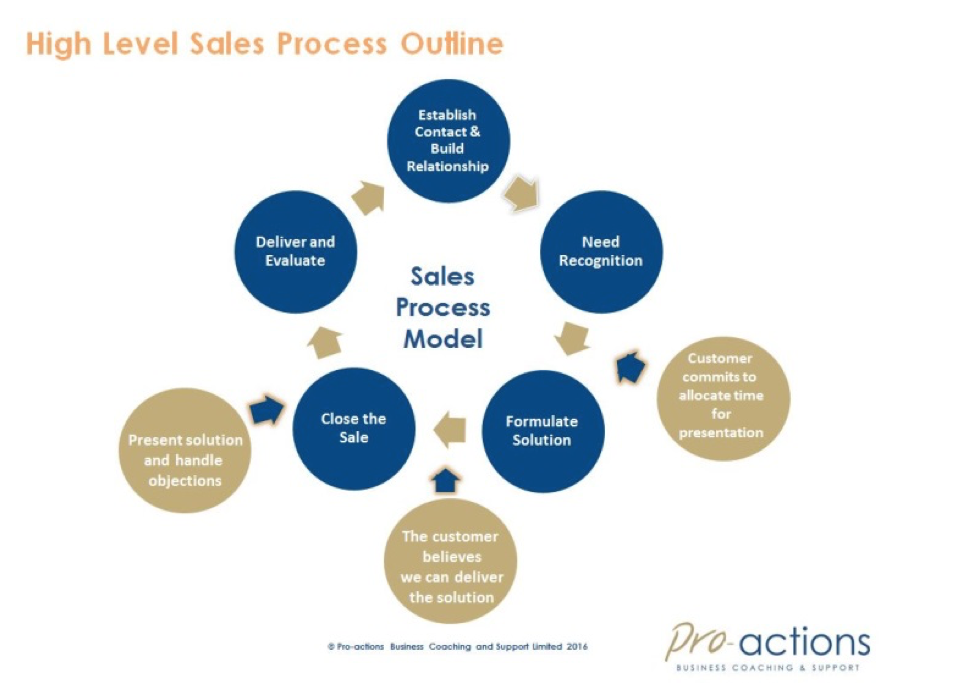Constructing a Sales Strategy

POSTED ON: Friday, December 9th, 2016
CATEGORIES: Business Strategy and Planning, Sales
A sales strategy is a plan by a business or individual on how to go about selling products and services and increasing profits (Source – Chron).
A high proportion of SMEs fail to grow their sales. This is for two main reasons:
- internal (e.g. lack of planning or inadequate capacity and capability)
- and/or external (e.g. strong competition or difficulty in accessing growth finance)
Almost half of SMEs don’t plan[1]. Planning is key to enabling sales growth. And you can’t plan without knowing what your strategy is.
So what are the building blocks of a successful sales strategy?
Clear business goals linked to sales growth objectives
Know what you want to achieve in the short and long term. And be able to answer the question ‘what is the goal for my business? All your sales objectives must align to this.
See last week’s article: Planning your business goals for 2017
Create a Powerful Sales Value Proposition
Choosing the target customer and understanding what is of value to them is the bedrock of successful sales strategy. Proctor & Gamble built their process based on four profound questions:
- Who is it for and How does it fit into their life?
- What will it do for them and Why should they believe you?
For more on this read: Looking at your Product through the eyes of your customer
Know Your Competitive Advantage
Firstly, from your customers’ perspective (not yours): ‘Who are your competitors?’
‘What else might my customers buy instead?’ ‘From whom?’ and ‘why?’ are great questions for exploring this.
Once you know who your competitors actually are, you can appraise their strengths and weaknesses relative to you. Note that your product isn’t the only element at play. Your service or route to market might be a powerful strength!
Download our free competitor analysis template here.
Have a Clear Go-To-Market Model
“How should we reach and sell to our customers?” The high level choices are ‘direct’ or ‘indirect’.
’Direct’ uses field based sales teams, telesales or trade shows/exhibitions and is commonly used by larger businesses. It can, however, be expensive to set up and run. E-Commerce has grown phenomenally and can be relatively inexpensive. However it isn’t easy to break through the cluttered world of the internet and you must have a strong sales proposition and a clear, differentiated marketing strategy to make it work.
Indirect can be preferable for reasons such as specialist distribution, complementary service provision, or cost. Working with an intermediary, added value reseller, retailer or local distributor can provide valuable know how and muscle. But can you get sufficient of their interest to fulfil your goals?
Many businesses deploy a mixture of routes: Warning! This needs care not to create channel conflict.
Invest in Capability and Capacity
Many SMEs invest too slowly in capability and capacity and pay the price.
Capacity may be the expansion of the sales function beyond the business owners. For many owners taking on employees is difficult as it involves a change from doing to leading and managing. Taking the step however is vital to growing the business.
Capability could relate to developing specific skills such as account managers, new business development specialists or an inside sales function required to either consolidate or accelerate growth.
Ensure you have a Clear Sales Process
Your sales process is the defined set of steps leading from prospecting to repeat sales and happy customers. It is different for every business but must be clear, repeatable and measurable. Sales is a detailed business and shouldn’t rely on the “gift of the gab” or a talented individual.
So, what does a sales process look like?

You should understand each step in your sales process and evaluate performance. One of the keys to growth is improvement at each step; number of leads, conversion rate of leads to customer, average order value, repeat purchases. All of these can be monitored and improved upon and – combined – can have a dramatic effect on the top and bottom line!
For more on this look out for next week’s newsletter!
Robust Sales Management
Tracking key sales metrics will help deliver sales growth by alerting management to what is working and what is not.
There are 5 metrics common to every business; sales by month, sales by product or service, new versus repeat sales, sales per customer and the often overlooked metric: sales per campaign or activity.
Thereafter it is about having a regular review discipline.
Weekly: Check your numbers in month – the start of the month is about order intake, the end of the month about invoiced sales.
Monthly: Have a monthly sales review – what’s going well (and where)? What isn’t going according to plan (and why)? What adjustments are required?
Quarterly: Re-forecast the business, re-appraise your marketing, look at costs!
Annual: Review the year in progress and plan for the coming year! Build your budget and put in place robust market, geographic and account plans to help you go again!